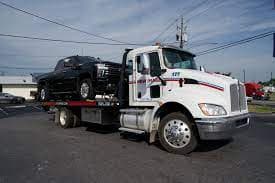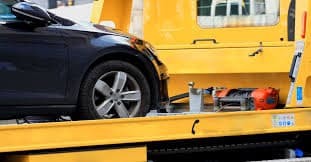Emergency Roadside Assistance: What to Do When Your Car Breaks Down in LA
Los Angeles is a sprawling city with congested highways and unpredictable traffic. Whether you're commuting to work, running errands, or taking a road trip, a vehicle breakdown can happen at any time. Knowing what to do in such situations can help ensure your safety and get you back on the road quickly. This guide will walk you through the steps to take when your car breaks down in LA and highlight the best emergency roadside assistance options available.
Step 1: Stay Calm and Assess the Situation
When your car breaks down, the first and most important thing to do is remain calm. Panicking can lead to poor decision-making, which could put you in danger. Try to determine the issue as quickly as possible. Common problems include a dead battery, engine failure, flat tires, or an empty fuel tank.
Step 2: Move to a Safe Location
If possible, try to steer your car to a safe location away from moving traffic. The safest spots include:
- The right shoulder of the highway
- A nearby parking lot
- A designated emergency lane
- A well-lit area at night
If your car stalls in the middle of traffic and cannot be moved, turn on your hazard lights and remain inside the vehicle until help arrives.
Step 3: Turn On Hazard Lights and Use Roadside Safety Equipment
Turning on your hazard lights alerts other drivers that you are experiencing an issue. If you have road flares or reflective triangles, place them a safe distance behind your car to make it more visible to approaching vehicles.
Step 4: Call for Emergency Roadside Assistance
Once you are in a safe location, contact a reliable roadside assistance service. Several providers in Los Angeles offer emergency assistance, including:
1. AAA (American Automobile Association)
- Battery jump-start
- Flat tire replacement
- Emergency fuel delivery
- Lockout services
- Towing services
2. Los Angeles Towing Services
- 24/7 emergency towing
- Roadside assistance
- Accident recovery
- Winching services
3. Your Auto Insurance Provider
- Many insurance companies include roadside assistance in their policies. Check with your provider to see if you have coverage.
4. Local Mechanic Services
- Some mechanics offer mobile services and can come to your location to fix minor car problems on the spot.
Step 5: Contact Friends or Family
If you don’t have access to roadside assistance, calling a friend or family member for help can be a good option. They may be able to provide a jump-start, bring extra fuel, or help you get to a safe location.
Step 6: Stay Inside the Vehicle if It's Safe
If you are on a busy highway or an unsafe area, it's best to stay inside your vehicle with your seatbelt fastened. Avoid accepting help from strangers unless they are law enforcement officers or roadside assistance professionals.
Step 7: Know Your Location
When calling for roadside assistance, providing your exact location can help speed up the process. Use your smartphone’s GPS or look for highway signs, mile markers, or nearby landmarks to give an accurate location.
Step 8: Be Prepared for Future Breakdowns
To minimize the risk of breakdowns in the future, consider these proactive steps:
- Regularly service your vehicle
- Check your tire pressure and fluid levels before long trips
- Keep an emergency roadside kit with jumper cables, a flashlight, water, and basic tools
- Ensure your phone is charged before hitting the road
Conclusion
Breaking down in Los Angeles can be stressful, but staying calm and following these steps will keep you safe and help you get back on the road as soon as possible. Whether you rely on AAA, a local towing service, or your insurance provider, knowing your emergency roadside assistance options is crucial. Stay prepared, drive safely, and always have a plan in place for unexpected car troubles.








